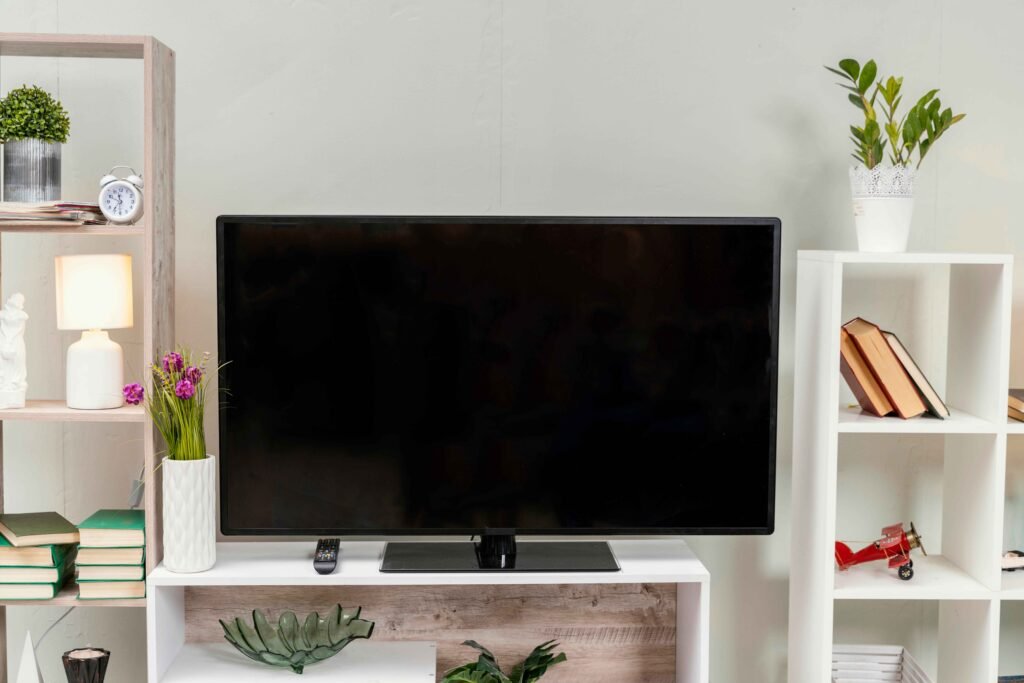Dispose of a flat screen TV responsibly is crucial for both the environment and public health. Improper disposal can release toxic materials like lead and mercury into the ecosystem. Many cities provide designated electronics recycling centers where you can drop off your old TV.
Retailers such as Best Buy and Staples often have recycling programs available. Always check local regulations and guidelines to ensure proper disposal. Recycling helps reclaim valuable materials and prevents harmful substances from contaminating the environment. Proper disposal not only meets legal requirements, but also supports sustainable practices.

Why Proper Disposal Is Important
Dispose of a flat screen TV requires care. Proper disposal is crucial. It helps protect the environment and follow the law. Flat screen TVs contain harmful substances. Dumping them can cause harm. Let’s learn why proper disposal is important.
Environmental Impact
Flat screen TVs have materials that can hurt the environment. These materials include lead, mercury, and cadmium. When not properly disposed of, these substances can leak into the ground. They can also get into water sources. This can harm plants, animals, and even humans. Recycling is a better option. It keeps harmful substances out of the environment. Recycling also saves resources. It reduces the need to mine for new materials.
Here are some benefits of recycling flat screen TVs:
- Reduces pollution – Keeps toxins out of the soil and water.
- Saves energy – Using recycled materials saves energy.
- Conserves natural resources – Less mining needed for new materials.
Legal Regulations
Dispose flat screen TVs is not just about the environment. There are laws to follow. Many places have rules on electronic waste. These rules ensure safe disposal. Breaking these rules can lead to fines. Some areas require you to take TVs to special recycling centers. Others have pick-up services for electronic waste.
Here are some common legal requirements:
| Requirement | Description |
| Special recycling centers | Take your TV to a certified center. |
| Pick-up services | Some cities offer pick-up for electronic waste. |
| Fines for improper disposal | Illegal dumping can lead to fines or penalties. |
Always check local regulations before disposing of your flat screen TV. This ensures you follow the law and protect the environment.
Options For Disposal
Dispose of a flat screen TV can be tricky. Many people do not know the best way to get rid of them. You can’t just throw them in the trash. Old TVs have harmful parts. They can hurt the environment. There are several good options for disposal. These include recycling centers, manufacturer take-back programs, and donation.
Recycling Centers
Recycling centers are a great choice for TV disposal. They help keep our planet clean. Many towns have local recycling centers. These centers accept old electronics. They ensure the TVs are broken down safely. This helps prevent harmful chemicals from leaking.
- Call your local recycling center.
- Ask if they accept flat screen TVs.
- Drop off your TV during their open hours.
Some recycling centers may even offer pick-up services. This can be convenient. You can also look for special recycling events. These events may happen in your community. They often accept old electronics. This is a good way to get rid of your TV safely.
Manufacturer Take-back Programs
Many TV manufacturers offer take-back programs. These programs let you return your old TV to the maker. The manufacturer will then recycle it properly. This ensures that harmful parts are handled safely. It also helps reduce waste.
- Visit the manufacturer’s website.
- Look for their take-back program information.
- Follow the steps to return your TV.
Some manufacturers offer free shipping for returns. This makes it easy to send back your old TV. You might need to print a shipping label. Some programs may require you to drop off the TV at a specific location. Always check the details on their website.
Donation
Donating your old TV is another great option. Many people or groups need a TV. Your old TV can still be useful to them. Make sure your TV is in good working condition before donating.
- Contact local charities.
- Ask if they accept TV donations.
- Arrange a drop-off or pick-up time.
Some schools and community centers also accept TV donations. This can be a wonderful way to help others. Your old TV can bring joy to many people. Always ensure your TV is functioning well before donating. This ensures the recipient can use it without problems.
Preparing The TV For Disposal
Dispose of a flat screen TV might seem hard. It is important to do it correctly. Preparing the TV for disposal is key. This ensures no personal data is left behind. It also helps recycle or proper disposal.
Backup Data
First, you should back up any data stored on your TV. Modern TVs can store a lot of data. This includes settings, apps, and personal information.
Follow these steps to back up data:
- Check the TV manual for backup instructions.
- Use a USB drive to save important files.
- Transfer data to a cloud storage service if available.
Backing up data ensures you don’t lose any important information. It is also a safety measure. Before disposing of the TV, make sure all your data is safe. This process usually takes not much time. But it is important.
Wipe Personal Information
Next, it is vital to wipe all personal information from your TV. This step protects your privacy
. Follow these steps to wipe data:
- Go to the settings menu on your TV.
- Look for an option like “reset to factory settings.”
- Select this option and confirm the reset.
Wiping personal data is crucial. It ensures no one can access your information. This includes passwords, browsing history, and app data. After wiping, your TV is like new in terms of data.
Make sure the reset is complete. Double-check that all personal info is gone. This step is as important as backing up data. It keeps your information safe.
Safety Measures
Dispose of a flat screen TV requires careful planning and attention to safety. Proper disposal not only protects the environment, but also ensures your safety. Taking the necessary safety measures can prevent accidents and injuries. Here, we will discuss how to handle glass components and avoid damage to the screen.
Handling Glass Components
Handling the glass components of a flat screen TV is crucial. Glass can break easily and cause injuries. Always wear protective gloves and safety goggles when dealing with the screen. These items protect your hands and eyes from sharp glass shards.
- Lay the TV on a soft, flat surface to avoid pressure on the screen.
- Use a screwdriver to remove any screws holding the glass in place.
- Gently lift the glass component and place it in a safe area.
- Do not apply excessive force when handling the glass.
- Avoid using sharp tools near the glass to prevent breakage.
If the glass breaks, clean up the shards carefully. Use a broom and dustpan to collect the pieces. Dispose the broken glass in a thick plastic bag or sealed container.
Avoiding Damage To The Screen
Protecting the screen is essential during disposal. The screen is the most delicate part of the TV. Cover the screen with a soft cloth to shield it from scratches.
- Always carry the TV upright to distribute weight evenly.
- Do not place heavy objects on top of the screen.
- Store the TV in a temperature-controlled environment to prevent damage from extreme temperatures.
- Never drag the TV across the floor; it may cause the screen to crack.
- Do not expose the screen to direct sunlight for long periods.
Proper handling and storage can keep the screen intact. This ensures the TV remains in good condition until it is properly disposed of or recycled.
Conclusion And Final Disposal Steps
Dispose a flat screen TV can be a challenging task. Proper disposal is essential to avoid harming the environment. It’s important to follow the right steps to ensure the TV is safely and responsibly disposed of. This guide will help you through the final disposal steps.
Transportation
Transporting a flat screen TV requires care. Ensure the TV is well-protected during transit. Use the original box if you have it. If not, you can use a suitable box and padding materials.
Here are some tips:
- Remove all cables and accessories before packing.
- Wrap the TV in bubble wrap to protect the screen.
- Place the TV in a sturdy box and fill any gaps with foam or padding.
- Label the box as “Fragile” to ensure careful handling.
Once packed, transport the TV in an upright position. Avoid laying it flat, as this can damage the screen. If you are using your vehicle, secure the box to prevent movement. For large TVs, consider hiring a professional moving service. They have the right equipment to handle delicate items.
Documentation
Proper documentation is crucial when disposing of electronic devices. Keep a record of the disposal process. This can help track the TV’s journey and ensure it is properly disposed of.
Here are some important documents to maintain:
- Receipt of purchase: This shows you are the owner of the TV.
- Disposal receipt: Obtain this from the disposal facility or recycling center.
- Transport documentation: If using a moving service, keep their receipt and any relevant paperwork.
These documents can be useful for warranty claims or if there are any issues with the disposal process. Ensure all paperwork is stored safely. This will help if you need to refer to it in the future.
Conclusion
Proper disposal of a flat screen TV is crucial. Follow the steps outlined to ensure safe and eco-friendly disposal. Remember, recycling centers, electronic retailers, and donation options are available. Make responsible choices to protect the environment. Your efforts contribute to a greener planet and a clutter-free home.







